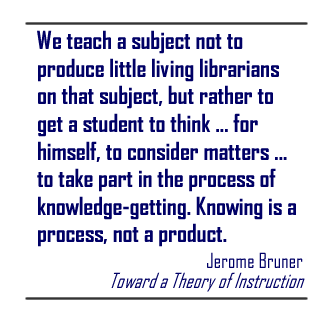Good teachers:
- are good at explaining things. Do you like to explain how something works, or how something happened? Being comfortable with explaining content to students is an essential skill for teachers, regardless of the subject or grade level.
- keep their cool. There will be times when you will be tempted to scream or yell at your students, other teachers, parents, administrators, and so on. Good teachers are able to successfully resist this urge
- have a sense of humor. Research has consistently shown that good teachers have a sense of humor, and that they are able to use humor as part of their teaching methods. Humor, used properly, can be a powerful addition to any lesson.
- like people, especially students in the age range in which they intend to teach. Most teachers choose an area of specialization such as elementary education, special education, secondary education, or higher education because they have a temperament for students in those age ranges. If you are not comfortable working with young children, don't major in elementary education!
- are inherently fair-minded. They are able to assess students on the basis of performance, not on the students' personal qualities.
- have "common sense." It may sound a bit corny, but good teachers are practical. They can size up a situation quickly and make an appropriate decision. Whether managing a classroom, leading students on a field trip, seamlessly shifting from one instructional procedure to another, assigning detentions, supervising an intern, or dealing with policy and curriculum issues in the school, there is no substitute for common sense.
- have a command of the content they teach. For elementary school teachers, that means having knowledge of a broad range of content in sufficient depth to convey the information in meaningful ways to the students. For secondary school teachers, it usually means having an in-depth command of one or two specific content areas such as mathematics or biology.
- set high expectations for their students and hold the students to those expectations. If you are thinking about becoming a teacher, you should set high expectations for yourself, and demand excellence not only of yourself, but your students as well.
- are detail oriented. If you are a disorganized person in your private life, you will find that teaching will probably be uncomfortable for you. At the very least, teachers must be organized in their professional and teaching duties. If you're not organized and are not detail oriented, teaching may not be the best choice of a profession for you.
- are good managers of time. Time is one of the most precious resources a teacher has. Good teachers have learned to use this resource wisely.
- can lead or follow, as the situation demands. Sometimes, teachers must be members of committees, groups, councils, and task forces. Having the temperament to function in these capacities is extremely important. At other times, teachers assume leadership roles. Be sure you are comfortable being a leader or a follower, because sooner or later, you will be called on to function in those roles.
- don't take things for granted. This applies to everything, from selecting a college or school of education to filing papers for certification. Good follow-through habits should be cultivated throughout life, but they are never more important than during your teacher education program. Read the catalog, know the rules, be aware of prerequisites and meet deadlines. In one sense, you don't learn to teach by getting a degree and becoming certified. You learn to teach in much the same way you learned to drive -- by driving. You learn to teach by teaching, by making mistakes, learning from them and improving. The purpose of a teacher education program is to get you as ready as possible to learn how to teach by subjecting you to a variety of methods and experiences that have a basis in tradition and research.
- have some "hard bark" on them. Take it from me as a teacher in both public schools and at the university level, that you need some hard bark in order to survive let alone thrive. to illustrate the point, here is an excerpt from an ADPRIMA page that discusses the subject in more detail:
John Russell, the name of the character played by Paul Newman in the 1967 movie "Hombre," was told, in the latter part of the film by a man he had just shot in order to protect a group of innocent, yet cowardly people, "Mister, you've got some hard bark on you." Indeed he did, because he was both physically tough and tough minded. He was also realistic, honest, fair, and understood that sometimes doing the right thing involves risk. There is a lesson in all of this for education students.
Without a doubt, young men and women entering the teaching profession today need to have some "hard bark" on them. If they don't, the small wounds inflicted by dealing with the everyday problems of teaching, disciplining, planning, counseling, dealing with administrators, colleagues, parents, and so on, mount up. If they're easily wounded by disappointment, rudeness, and even unfairness, they won't last because these things happen, and nothing will change that.
All of these qualities define some of the characteristics of good teachers. If it is not your goal to become a good teacher at the very least, perhaps thinking about the above will help you see other career alternatives. A good idea, when first making such a decision, is to talk to teachers. Find out what they do, and what led them into teaching. Do a personal inventory of your own values, personality, preferences and goals. But, whatever you do, don't go into teaching simply because you love kids!



























